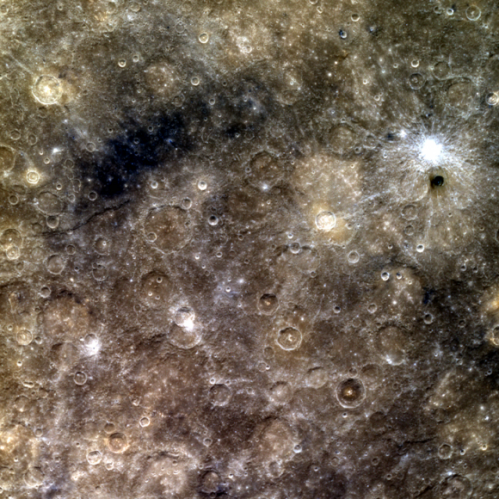Mercury's many colors

Although composited from expanded wavelengths of light, this wide-angle image from NASA’s MESSENGER spacecraft shows the amazing variation of colors and tones to be found on Mercury’s Sun-scoured surface.
This scene lies between Mercury’s Moody and Amaral craters, spanning an area of about 1200 km (745 miles). The patch of dark blue Low Reflectance Material (LRM) in the upper left of the image and the bright rayed crater on the right make this a diverse view of Mercury’s surface. Note the curious small, dark crater just below the bright rayed crater on the right.
Dark LRM material is thought to indicate the presence of a mineral called ilmenite, which is composed of iron and titanium and has been revealed through volcanic, cratering and erosion processes.
Did you know that until MESSENGER arrived in 2008 half of Mercury had never been seen? And that although Mercury is the closest planet to the Sun there may still be water ice on its surface? Learn more about these and other fascinating facts about Mercury here.
Source: Universe Today



















